#w todd kaneko
Text
Culture Consumption: March & April 2022
Culture Consumption: March & April 2022
Hoo, boy. Time slipped right by me. I was planning to do my Culture Consumption for March on time, but then the next thing I knew it was April. In addition to putting two months together, I’ve done a lot media consumption over the past two months — which means I’ve got a huge stack of things to talk about.
I’ll try to move through it all as quickly as I can. If I have the wherewithal, I’ll try to…

View On WordPress
#book love#book reviews#games#Geraldine Brooks#Holly Lyn Walrath#Jilly Dreadful#movies#Nnedi Okorafor#podcasts#reviews#television#W. Todd Kaneko
0 notes
Text






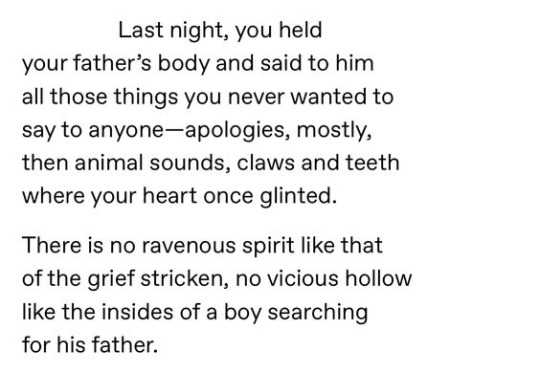


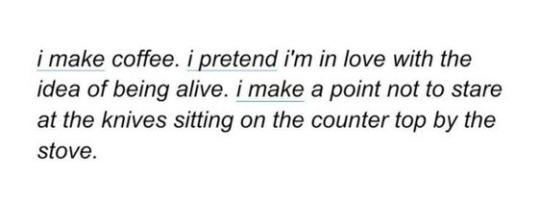
suddenly childhood ended and now i am supposed to know how to live
Franz Wright Entry In An Unknown Hand / Elena Ferrante (tr. Ann Goldstein) Those Who Leave and Those Who Stay (via @luthienne) / Jenny Zhang How It Feels / Anna Kamienska Astonishments / unknown / Gabrielle Bates & Jennifer S. Cheng So We Must Meet Apart / W. Todd Kaneko The Day After / image; SZA Blind / Ethel Cain Dog Days / @darkerthanerebus / pinterest
#vent lol#on sadness#on loneliness#on growing up#on letting go#on being abandoned#tw sh#tw self harm#tw suicide#franz wright#entry in an unknown hand#elena ferrante#those who leave and those who stay#jenny zhang#how it feels#anna kamienska#ashtionishments#gabrielle bates#jennifer s cheng#so we must meet apart#w todd kaneko#the day after#sza#blind#ethel cain#dog days
194 notes
·
View notes
Text
2022 reads!
since everyone is doing this, i figured i might as well join in! i track my reading through thestorygraph and aim for 30 books in a year, though i don't usually count shorter texts read for class or the plays i skim when looking for material in my acting classes. favorites in each category are bolded. feel free to ask questions on any of these!
FICTION:
House of Leaves – Mark Z. Danielewski
Detransition, Baby – Torrey Peters
Sula – Toni Morrison
The Infinite Noise – Lauren Shippen
A Neon Darkness – Lauren Shippen
Some Faraway Place – Lauren Shippen
Gone Girl – Gillian Flynn
Paradise – Toni Morrison
Gideon the Ninth (Reread) – Tamsyn Muir
Harrow the Ninth (Reread) – Tamsyn Muir
Sharp Objects – Gillian Flynn
A Psalm for the Wild-Built – Becky Chambers
This is How You Lose the Time War – Max Gladstone & Amal El-Mohtar
The Seven Husbands of Evelyn Hugo – Taylor Jenkins Reid
A Room Called Earth – Madeleine Ryan
Nona the Ninth – Tamsyn Muir
Frankenstein (Reread) – Mary Shelley
Hell Followed with Us – Andrew Joseph White
Dracula (through Dracula Daily) – Bram Stoker
Eartheater – Dolores Reyes (trans. Julia Sanches)
My Heart is a Chainsaw – Stephen Graham Jones
Lolita – Vladimir Nabokov
NON-FICTION:
Kill All Normies: Online Culture Wars from 4chan and Tumblr to Trump and the Alt-Right – Angela Nagle
Fun Home: A Family Tragicomic (Reread) – Alison Bechdel
POETRY:
War of the Foxes – Richard Siken
Poetry: A Writer’s Guide and Anthology – W. Todd Kaneko & Amorak Huey
Life on Mars – Tracy K. Smith
Anglo-Saxon Judith – Unknown
Beowulf – Unknown
Sir Gawain and the Green Knight – The Pearl Poet
PLAYS:
Cloud 9 – Caryl Churchill
How I Learned to Drive – Paula Vogel
Mr. Burns and Other Plays – Anne Washburn
In the Other Room (The Vibrator Play) – Paula Vogel
Becky Shaw – Gina Gionfriddo
The Skriker – Caryl Churchill
The Tempest – William Shakespeare
This is Our Youth – Kenneth Lonergan
Bully – Amina Henry
The Merchant of Venice (Reread) – William Shakespeare
The Marriage of Bette and Boo – Christopher Durang
Measure for Measure (Reread) – William Shakespeare
8 notes
·
View notes
Text
Blog Post 4: Image and Metaphor
If there is one thing to take away from the imagery section of Amorak Huey’s and W. Todd Kaneko’s book Poetry, it’s this: “What the poet thinks of as a ‘modest house might be one reader’s mansion and another reader’s hovel…You should never assume that your judgement is ‘normal’ or somehow universal” (70). This idea, coupled with the authors’ distinction between concrete and abstract imagery, is great advice to consider when creating imagery. It’s something I’ll have to consistently remind myself while writing, to make sure I’m clearly conveying to my audience what I am envisioning in my head. When I think of imagery in lyrics, Nas’s Illmatic album stands out as one of the best to do it. The entire album does a fantastic job at incapsulating a 90’s crime-fueled New York City and helps the reader envision the struggles that native new Yorkers like Nas go through. The whole album feels as though it was made to be used as the city’s own personal soundtrack.
On the topic of metaphors, one of my biggest concerns when writing is coming across as cheesy, cliched, or shallow. Metaphors can greatly heighten or lessen one’s poem depending on how well or how poorly they are executed. Huey and Kaneko point this out when discussing extended metaphors and how poorly executed metaphors obscure the poem’s subject matter when they should instead be expanding on it. Extended metaphors in poetry are certainly something I would like to experiment with down the road once I feel more confident in my ability to incorporate metaphors in my writing.
3 notes
·
View notes
Text
Thank you Ilanot Review...
And many thanks to Marcela Sulak, Jane Medved, Alison Powell, and W. Todd Kaneko for nominating my poem for Best of the Net!, “I Made a Roof out of the Wolf” in the Want Issue
http://www.ilanotreview.com/want/poems-cassandra-whitaker/
View On WordPress
1 note
·
View note
Text
Blog Post 4 - Image and Metaphor
Happy Monday All!
When writing poetry, I tend to jot down all my ideas that I want to be included, slowly piece those ideas in an order, and lastly add in those words that really make the piece pop. That addition is usually imagery words or metaphors.
Amorak Huey and W. Todd Kaneko state that “the image is perhaps the building block of all successful writing” (p.69). I agree with this thoroughly. When I read a piece, if I can’t in someway see or feel what is happening, it is hard for me to follow. Imagery gives writing that extra dash of something that brings a piece to life.
The next is metaphors. I always struggled with these going through school. I know a simile used like it as and that was about all I could remember. Huey and Kaneko define it as “a comparison between two things in order to make a rhetorical point” (p. 83). I was never taught the rhetorical part of that, which is where my struggle was founded. Metaphors can be used to give words a deeper meaning. Instead of saying “life is a long journey with a lot of choices,” you could say “life is a Highway” because a Highway has exits and lane changes and stop and go and so on.
These elements of writing can make or break a poem. Overuse can make a piece seem forced or confusing. Underuse can drain a poem of its meaning. It is impute find a happy medium.

1 note
·
View note
Text
Where the Sky Meets the Earth
by W Todd Kaneko
A man can’t die where there is no earth
because there will be no place
to bury him. His body is the sky
and understands the language of birds.
His body says the earth is made of everything
that has fallen from Heaven
while no one was looking. He promises
to defy gravity and then return home.
A man can’t reach for the sky and not feel
he is falling. It goes on forever and the birds
talk about the awesomeness of flight
while the oxen labor in the fields,
while the cows eat grass and dream
of slaughter. A man can’t talk about flight
because one day, there will be no sky,
just the body covered in earth.
And now the sky is empty of birds.
And now the earth is covered in flowers.
[via poets.org]
5 notes
·
View notes
Text
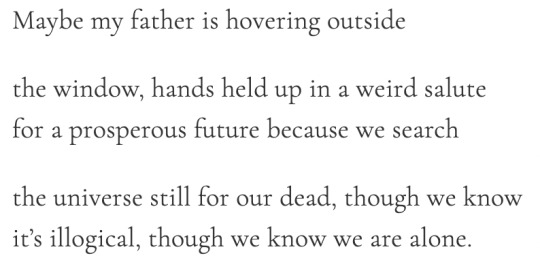
from Elegy for Mr. Spock by W. Todd Kaneko
133 notes
·
View notes
Quote
A man can’t die where there is no earth
because there will be no place
to bury him. His body is the sky
and understands the language of birds.
His body says the earth is made of everything
that has fallen from Heaven
while no one was looking. He promises
to defy gravity and then return home.
A man can’t reach for the sky and not feel
he is falling. It goes on forever and the birds
talk about the awesomeness of flight
while the oxen labor in the fields,
while the cows eat grass and dream
of slaughter. A man can’t talk about flight
because one day, there will be no sky,
just the body covered in earth.
And now the sky is empty of birds.
And now the earth is covered in flowers.
“Where the Sky Meets the Earth” by W. Todd Kaneko
1 note
·
View note
Text
“All the Things That Make Heaven and Earth” - W. Todd Kaneko
The soil, the livestock, our memories of the war,
everything flourishing before it vanishes—breath
severed clean from our bodies, our shadows
sunset-deepened and woven with dirt,
whole family trees succumbing to the blight.
My grandfather returns to life, back still
bent by history’s quiet yoke, his memories
of camp forever decaying into the tiny garden
behind my house where my father’s death
is the soil, where silence blossoms now
all year round. Or the soil is my grandfather
eating darkness, the spectral memory of camp
that feasts upon my father and his father,
me and my son. There are no such things
as ghosts—I tell my son this every evening
as he gazes up the dark stairwell towards his room.
What will be waiting for us when my boy
is old enough to ask where he comes from?
What will we find when our memories of camp
finally molder back into the ground?
2 notes
·
View notes
Text
My father died a year ago
and I’m still writing poems to bring him back
to me—
— W. Todd Kaneko, from “Elegy for Mr. Spock," published in Split Lip
589 notes
·
View notes
Text
Where the Sky Meets the Earth
A man can’t die where there is no earth
because there will be no place
to bury him. His body is the sky
and understands the language of birds.
His body says the earth is made of everything
that has fallen from Heaven
while no one was looking. He promises
to defy gravity and then return home.
A man can’t reach for the sky and not feel
he is falling. It goes on forever and the birds
talk about the awesomeness of flight
while the oxen labor in the fields,
while the cows eat grass and dream
of slaughter. A man can’t talk about flight
because one day, there will be no sky,
just the body covered in earth.
And now the sky is empty of birds.
And now the earth is covered in flowers.
-- w. todd kaneko
5 notes
·
View notes
Text
A man can’t die where there is no earth
because there will be no place
to bury him. His body is the sky
and understands the language of birds.
His body says the earth is made of everything
that has fallen from Heaven
while no one was looking. He promises
to defy gravity and then return home.
A man can’t reach for the sky and not feel
he is falling. It goes on forever and the birds
talk about the awesomeness of flight
while the oxen labor in the fields,
while the cows eat grass and dream
of slaughter. A man can’t talk about flight
because one day, there will be no sky,
just the body covered in earth.
And now the sky is empty of birds.
And now the earth is covered in flowers.
Where the Sky Meets the Earth | W. Todd Kaneko
1 note
·
View note
Text
Blog Post 2: An Introduction to Poetry
Simply put, poetry is raw emotion transformed into written word. Therefore, the meaning of poetry is to express one’s emotional response to the word around them. Poetry is meant to convey feelings and express guttural reactions in ways that no other form of written language can. To simply write down how one is feeling is not enough because the simplification of being straight forward and to the point does not adequately capture one’s inner emotions. By expressing these feelings, these moods, through poetry, poets can share their exact emotional feeling with the reader. Poetry (in addition to other creative mediums like art, music, etc.) is one of the closest things we as a people have as a vehicle to share our emotional reactions with others and allow others to feel that same emotional reaction. It is a tool that helps connect people through a shared experience which transcends both time and space.
Section one of Amorak Huey and W. Todd Kaneko’s book Poetry does an excellent job redefining the meaning of talent. The authors explain how talent derives not from raw, unnatural skill, but from the capability to work hard, work consistently, and to overcome one’s fears and insecurities by acknowledging their existence and working despite their presence. It is incredibly rare for someone to naturally excel at a skill, hobby, or area of interest. The road to talent is paved with years of hard work, long hours, and learning from countless mistakes. Talent is not a trait that one is either born with or without, but one that he/she slowly develops over time through persistence and dedication.
On the topic of “what does it mean to be a poet?” a poet is merely one expresses himself through the medium and shares his expression with anyone who is willing to read what he has to say. Anyone can be a poet as long as they are willing to do just that.
5 notes
·
View notes
Photo
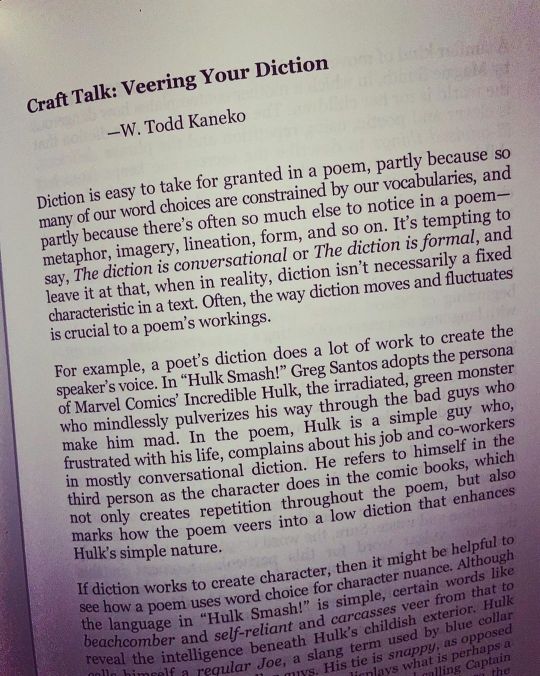
Thank you to @toddkaneko for referencing “Hulk Smash!” in this essay about diction in poetry alongside @maggiesmithpoet’s outstanding and viral poem “Good Bones” in the new book The Strategic Poet: Honing the Craft (Terrapin Books, 2021) edited by Diane Lockward. Hulk is humbled, honoured, and grateful. 💚 Photo credit: W. Todd Kaneko. . . . #gregsantos #hulksmash #toddkaneko #maggiesmithpoet #dianelockward #poetry #poetrycraft #poetrycommunity #writingcommunity https://www.instagram.com/p/CVB2TicN1WG_ljLfWHTDA0VR1u5TW4vEm8XJFY0/?utm_medium=tumblr
#gregsantos#hulksmash#toddkaneko#maggiesmithpoet#dianelockward#poetry#poetrycraft#poetrycommunity#writingcommunity
7 notes
·
View notes
Text
Blog Post 8: Haikus and Sonnets
This week the class wrote Haikus and Sonnets:
Sonnet
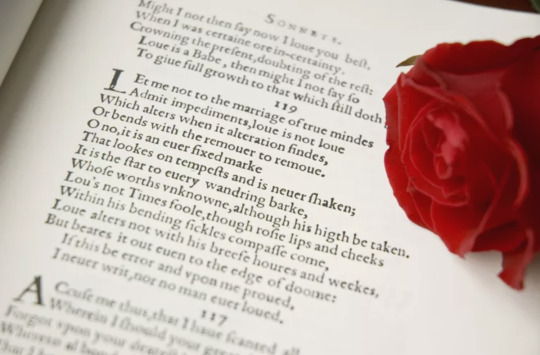
A sonnet, according to an article on the Poetry Foundation, is “a 14-line poem with a variable rhyme scheme… the sonnet traditionally reflects upon a single sentiment, with a clarification or “turn” of thought in its concluding lines. There are many different types of sonnets” (“Sonnet”). The formal rhyme scheme in a Shakespearean sonnet is ABAB CDCD EFEF GG:

Syllables in Sonnets matter; in a typically Shakespearean poem the writer uses a combination of stressed and unstressed syllables to create their lines. In our assignment, we could either follow a Shakespearean sonnet format or create a Shakespearean sonnet that has 10 syllables per line. When deciding what to write I chose to create a sonnet with 10 syllables per line. Writing my poem was an… experience. The first thing I did was decide how I was going to split the poem in my head, I wanted to use the 14 lines 4 stanza format to create a 3 act and an epilogue structure. I find it easier to do poetry when I think about it like I am creating a story. I find it easier to wrap my head around everything, at least for the first time writing that poetry genre. I wrote out what I wanted each “act” to be before writing, it was a lot of fun deciding what to do and how to format it. I had been thinking about Lewis Carol a lot lately and wanted to create a story loosely inspired by “Alice in Wonderland.”

One of the biggest issues I came across when writing my poem was how big my ideas were compared to the size of the poem. Instantly realized that 10 syllables per line was not a lot to work with and I struggled to cut down every part of my poem to try and fit into the formal scheme. The second issue I realized was how hard it was using syllables alongside a rhyming scheme. I remember writing out a line that I was proud of and then realizing that I had forgotten to make the poem rhyme. Writing the sonnet was extremely hard, I kept scrapping and rewriting a draft over and over again until I was content.
My sonnet:

Haiku

According to Poetry Foundation, a haiku is a short 3-line poem from japan consisting of a 5 7 5 syllable scheme that is inspired by nature (“Haiku (or hokku)”). Before taking this course, I knew about haikus from a middle school class I took. I remember learning about them and never wanting to write one. I was intimidated by the short and strict format and didn’t know how I could write one. However, when starting this assignment, I was shocked at how quickly the words came to me.

The class had to choose a season to write about for the assignment, I went with my favorite season, Fall, I get engulfed in the serene atmosphere and the calming smell of the world-changing and getting cooler. I decided to link my sonnet and haiku by having the haiku set up the time of the sonnet. While I did struggle with the syllable length of the haiku, it was a lot easier than the sonnet, the thing I struggled with the most was deciding what lines to use. When drafting my haiku, I wrote many different versions of each line until I was happy with it. I ended up liking my haiku so much more than my sonnet, my younger self was worried about nothing. If I could rewrite my haiku outside of the class, I may try writing each line to be the setting of each act.
My Haiku:

Works Cited:
“Haiku (or Hokku).” Poetry Foundation. https://www.poetryfoundation.org/learn/glossary-terms/haiku-or-hokku.
Huey, Amorak, and W. Todd Kaneko. Poetry: A Writers’ Guide and Anthology. E-book, Bloomsbury, 2018
“Sonnet.” Poetry Foundation. https://www.poetryfoundation.org/learn/glossary-terms/sonnet.
Photos used from:
Limericks vs Haiku: What is the difference? - King of Limericks
Getty Images
Summer Boredom Blaster 9: Pursuing Poetry (solaro.com)
Economic Botany & Cultural History: American elm | Urban Forest Initiative (uky.edu)
6 notes
·
View notes